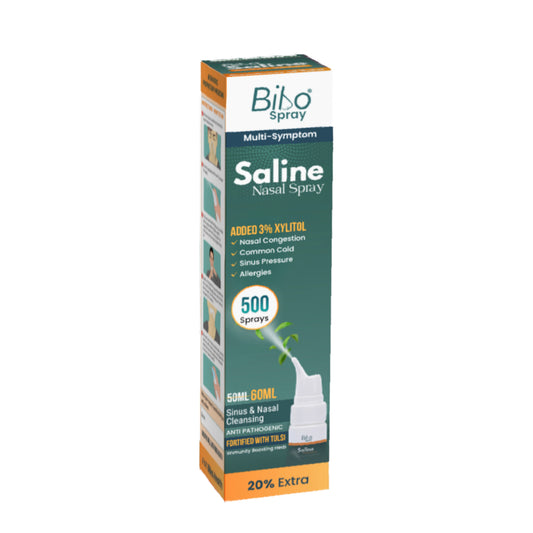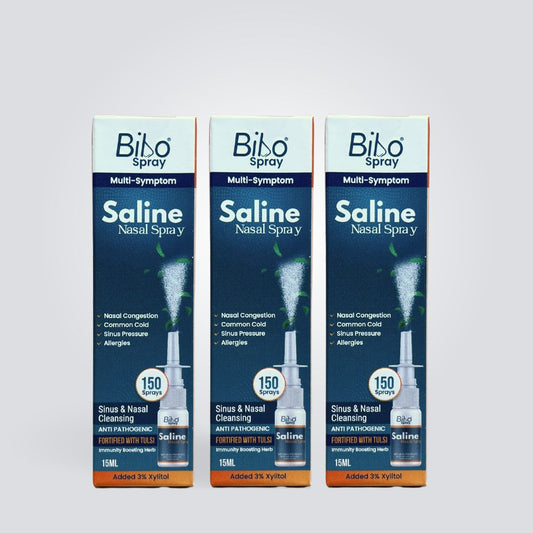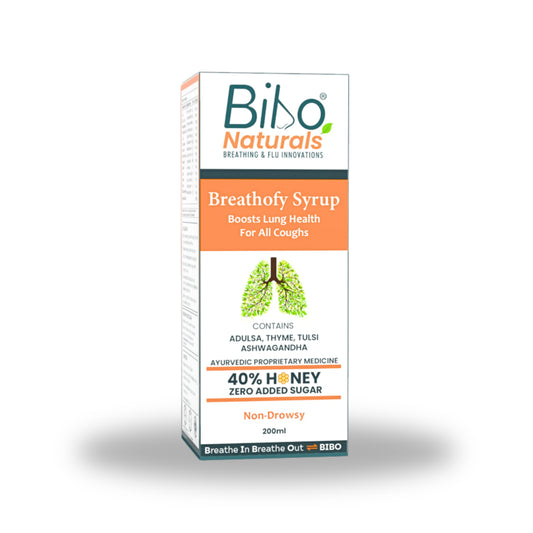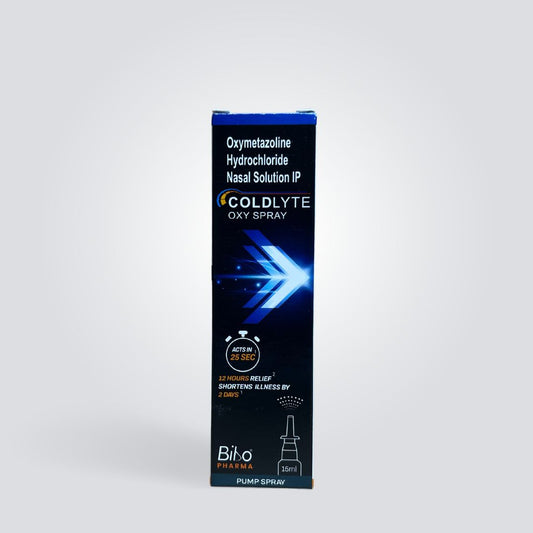
Blog written by: Sourav Pattanayak (M Pharm, MBA)
What is COPD?
COPD refers to chronic obstructive pulmonary disease. This chronic lung disease show results in ongoing airflow limitation and breathing issues. Since COPD is a progressive disorder, it usually becomes worse with time. The two primary types of COPD are chronic bronchitis and emphysema, and many COPD sufferers have both of these conditions at the same time.
The bronchial tubes (airways) in the lungs are inflamed and irritated in chronic bronchitis. This inflammation causes a chronic cough and more mucus to be produced. The lung's air sacs (alveoli), which are important for exchanging oxygen and carbon dioxide, are damaged and destroyed in emphysema. Airflow in the lungs is hampered, and lung function is compromised as a result of this injury.
Long-term exposure to hazardous chemicals, mostly cigarette smoke, is the main cause of COPD. Additional risk factors include genetic disorders such as alpha-1 antitrypsin deficiency, air pollution, and occupational exposure to chemicals and dust.
Shortness of breath, wheezing, a persistent cough that produces mucus or not, chest tightness, and recurrent respiratory infections are all signs of COPD. An individual's quality of life may be significantly impacted if these symptoms continue to deteriorate over time.
Despite the fact that COPD is a chronic and advancing condition, effective therapy can help reduce symptoms, halt disease progression, and enhance total lung function. Bronchodilator drugs to assist expand the airways, inhaled corticosteroids to decrease inflammation, pulmonary rehabilitation programs, supplemental oxygen therapy, and lifestyle changes, including quitting smoking and avoiding respiratory irritants are some treatment options for COPD.
What is Bronchial Asthma?
Asthma, sometimes referred to as bronchial asthma, is a long-term respiratory illness marked by inflammation and restriction of the airways. Many people are impacted by lung illness.
When a person has asthma, their airways swell up and become too sensitive to a number of triggers, such as respiratory infections, exercise, cold weather, stress, and allergens (such as pollen, dust mites, and pet dander). Breathing becomes challenging when exposed to these triggers because the muscles around the airways are tightened and constricted.
Symptoms of asthma are as follows:
Wheezing: an audible whistling or squeaking sound generated when breathing is difficult. It is mainly caused due to airway constriction.
Coughing: Usually harsher at night or in the morning; may result from vigorous exercise or contact with pollen substances.
Chest tightness: The sensation of chest tightness is one of the most common symptoms during an asthma attack.
Shortness of breath: Breathing difficulties due to airway obstruction.
What is the role of Acebrophylline in respiratory care?
Treatment for respiratory conditions such as bronchial asthma and chronic obstructive pulmonary disease uses a medication called Acebrophylline. It is a xanthine derivative with broncho-dilatory and mucoregulatory properties.
It functions as a bronchodilator to widen the airways and further increase airflow by unwinding the smooth muscles in the airways. It also has anti-inflammatory qualities that reduce airway irritation and may prevent the formation of inflammatory mediators.
The mucoregulatory properties of Acebrophylline may be used to control the production of mucus in the airways. It could make respiratory secretions less viscous which would make expectoration and mucus clearance more effective.
Patients with respiratory conditions who use Acebrophylline breathe easier, cough less frequently, and have fewer total exacerbations. It could help with symptoms, including wheezing, breathing problems, and chest heaviness.
What is the role of Theophylline in respiratory care?
Since the 1930s, asthma patients have been treated with theophylline, a potent methylxanthine with properties comparable to coffee in chemical structure. Methylxanthines are found in a variety of plants, including Theobroma cacao, Thea sinensis, and Coffea arabica (coffee, cocoa, chocolate).
For a very long period, it was used to treat respiratory diseases such as chronic obstructive pulmonary disease and asthma (COPD).
Theophylline assists in widening and opening the airways by relaxing the smooth muscles in them. This bronchodilator action improves airflow and makes it easier for patients to breathe. Theophylline also has additional mechanisms of action, including the ability to reduce inflammation and boost respiratory drive.
Oral administration of theophylline tablets or capsules is typical. It enters the bloodstream, where the liver processes it. Since theophylline has a constrained therapeutic range in the blood, it's crucial to regularly check blood levels to ensure they stay within this range. This is because theophylline may have harmful consequences when administered in either excessively low or large amounts.
Consistent side effects of theophylline include headaches, nausea, vomiting, and fast heartbeat. In larger dosages or if blood levels are excessively high, it might result in more serious side effects, including heart palpitations, arrhythmias, seizures, and even life-threatening outcomes. When using theophylline, it's important to adhere to the doctor's recommendations and have your blood levels tested frequently.
Tell your doctor about all the medications, dietary supplements, and herbal products you are currently taking before starting theophylline therapy. Other drugs may be affected by theophylline.
Treatments for respiratory issues such as bronchial asthma and chronic obstructive pulmonary disease include the medicines Theophylline and Acebrophylline.
|
Sl.no |
Activity |
Acebrophylline |
Theophylline |
|
1 |
Class of drug
|
A Xanthine derivative |
A methyl Xanthine derivative |
|
2 |
MOA (Mechanism of action) |
It acts as a bronchodilator and an anti-inflammatory and is hypothesized to have a dual mechanism of action. It eases the smooth muscles of the airways, which might lessen mucus production and inflammation of the airways. |
It relaxes the smooth muscles in the airways, which primarily work as a bronchodilator. Although less so than corticosteroids, it also has some anti-inflammatory properties.
|
|
3 |
Clinical use
|
Most often, this medication is used to treat COPD and bronchial asthma. It could improve airflow while reducing swelling and mucus production. |
For many years, individuals with COPD and asthma have used it to relieve bronchospasm and improve breathing. However, their use has lately decreased due to the availability of newer medications with fewer side effects. |
|
4 |
Route of administration
|
It is typically ingested orally as pills or capsules |
It can be given intravenously in some circumstances or taken orally as pills or capsules.
|
|
5 |
Metabolism and monitoring
|
Acebrophylline is processed in the liver, and regular blood level monitoring is not necessary.
|
Because it is processed in the liver, it requires routine blood level monitoring to maintain therapeutic levels and prevent toxicity. |
|
6 |
Side effects
|
It is often well accepted, and any adverse effects, such as gastrointestinal issues, headaches, dizziness, and skin rashes, are typically moderate and temporary. |
Its side effects are more diverse and may include nausea, tremors, migraines, digestive issues, and an increased heart rate. Significant adverse effects including arrhythmias or convulsions might occur with high dosages. |
Why is acebrophylline better than theophylline?
A case study was performed on patients above 40 years (adults of both sexes) taking respiratory medicine acebrophylline and theophylline. [1]
The result shows that Theophylline had more side effects when compared to Acebrophylline.
Cardiovascular-related problems, such as chest discomfort, palpitations, tremors, and tachycardia, were seen in patients receiving Theophylline while it is absent in individuals receiving Acebrophylline treatment.
Theophylline is an old-generation molecule and Acebrophylline is a new generation molecule used in the management of COPD.
Advantage of Acebrophylline over Theophylline
|
Sl.no |
Characteristic |
Acebrophylline |
Theophylline |
|
1 |
Action |
Shows dual action |
Show single action |
|
2 |
Bronchodilator effect (helps to keep the airways open) |
Present |
Present |
|
3 |
Mucolytic effect (helps to break the mucus) |
Present |
Absent |
|
4 |
CNS side effect (brain and spinal cord) |
Absent |
Present (tremor) |
|
5 |
CVS side effect (heart and blood vessels) |
Less severe |
Severe (chest pain, tachycardia, and insomnia)
|
|
6 |
Safety profile |
More likely used due to better safety profile |
Less likely used due to narrow/less safety profile |
|
7 |
Generation of drug |
New generation |
Old generation |
Conclusion
Bronchodilators are the most commonly used medicines for managing COPD and Asthma. According to recent studies, Acebrophyllin can be a better choice over Theophylline to control these respiratory issues because of its safety profile. Acebrophyllin shows fewer side effects than Theophylline.
References
- Tapadar, S. R., Das, M., Chaudhuri, A. D., Basak, S., & Mahapatra, A. B. S. (2014). The Effect of Acebrophylline vs Sustained Release Theophylline in Patients of COPD- A Comparative Study. Journal of Clinical and Diagnostic Research : JCDR, 8(9), MC11–MC14. https://doi.org/10.7860/JCDR/2014/8176.4869
- Keam, S. J., & Keating, G. M. (2004). Tiotropium bromide. A review of its use as maintenance therapy in patients with COPD. Treatments in Respiratory Medicine, 3(4), 247–268. https://doi.org/10.2165/00151829-200403040-00005
- Rabe, K. F., Hurd, S., Anzueto, A., Barnes, P. J., Buist, S. A., Calverley, P., Fukuchi, Y., Jenkins, C., Rodriguez-Roisin, R., Van Weel, C., & Zielinski, J. (2007). Global strategy for the diagnosis, management, and prevention of chronic obstructive pulmonary disease: GOLD executive summary. American Journal of Respiratory and Critical Care Medicine, 176(6), 532–555. https://doi.org/10.1164/RCCM.200703-456SO
- Peter J. Barnes. Theophylline: New Perspectives for an Old Drug. Am J Respir Crit Care Med. 2003; 167: 813– 18.
- Giovanni Agliati. Acebrophylline in the treatment of chronic obstructive pulmonary disease. Current Therapeutic Research. 1995; 56(2): 169-75.




